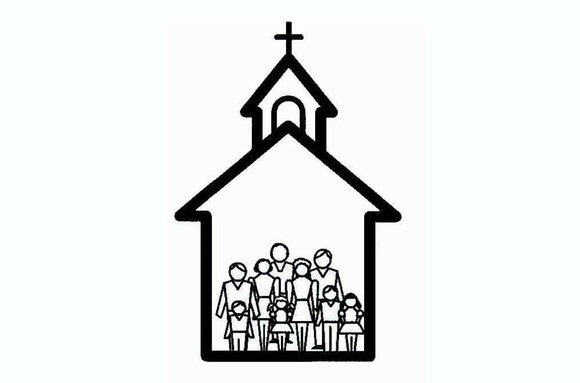Harlem churches see gospel tourist boom
4/22/2016, 6:13 a.m.
Associated Press
NEW YORK
The stern warning issued from the pulpit was directed at the tourists — most of whom had arrived late — a sea of white faces with guidebooks in hand. They outnumbered the congregation itself: A handful of elderly black men and women wearing suits and dresses and old-fashioned pillbox hats.
“We’re hoping that you will remain in place during the preaching of the Gospel,” a church member said over the microphone at this Harlem church on a recent Sunday morning. “But if you have to go, go now. Go before the preacher stands to preach.”
No one left then. But halfway through the sermon, a group of French girls made their way toward the velvet ropes that blocked the exit. An usher shook his head firmly, but they ignored him and walked out.
The clash between tourists and congregants plays out every Sunday at Mother African Methodist Episcopal Zion Church, the oldest black church in New York state. It’s one of many Harlem churches that have become tourist attractions for visitors from all over the world who want to listen to soulful gospel music at a black church service. With a record number of tourists descending upon New York City last year, the crowds of foreigners are becoming a source of irritation among faithful churchgoers.
To preserve the sanctity of the service, pastors struggle to enforce strict rules of conduct. But the reality is that these visitors are often filling church pews that would otherwise remain empty — and filling the collection basket with precious dollar bills.
“Our building is in need of repair,” church member Paul Henderson said after the service. “We need assistance. They’re helping to sustain us.”
The rules are simple enough: No photography, no flip-flops, no exiting during the sermon. They are printed on pamphlets and multilingual signs and announced at the start of every service. But they are often ignored. Ushers roamed the pews like security guards, stopping more than one person from filming on digital cameras.
“I understand that you’re visiting and you want to have a memory of it,” said Carlos Smith-Ramsay, who joined the church several years ago. “But when we ask you to stop and you continue to do so after the fact, that’s disrespectful.”
The Rev. Gregory Robeson Smith, Mother AME Zion’s pastor, refuses to work with tour operators. He doesn’t even like to use the word “tourist,” preferring instead to call them part of his “international congregation.” And he won’t turn anyone away.
“I refuse to commercialize the church worship experience,” he said.
Yet the tourists’ presence is undeniable. At Mother AME Zion, there were nearly 200 of them, overwhelming the congregation by at least 5 to 1.
“They want to see what they’ve seen on television,” said Larcelia Kebe, president of Harlem Your Way! Tours Unlimited. “They want to see what they’ve seen in the movies.”
The gospel tour industry has exploded since it was born in the early 1980s. On a busy summer Sunday, Harlem Spirituals, one of the oldest and largest tour operators, might run 15 full buses, said Erika Elisabeth, a company vice president.
Ticket prices can cost up to $55. Most churches get a cut of the profit. Others, like Mother AME Zion, make money by encouraging visitors to drop a suggested donation into the collection basket.
Just around the corner is the thriving Abyssinian Baptist Church, arguably the neighborhood’s most popular tourist magnet, where visitors are often turned away because the pews are too full.
Celeste Lejeune, 16, from Paris, didn’t know anything about Mother AME Zion’s history as a stop on the Underground Railroad, or that its congregants once included Frederick Douglass and Harriet Tubman.
“I would like to just hear voices of people who live in Harlem, and see the atmosphere,” she said. “We don’t have music like this in France.”
Longtime congregation member Dabney Montgomery, 88, a Tuskegee Airman during World War II and a civil rights activist, believes the tourists walk away richer for the experience.
“In listening to the Gospel, they get something out that they didn’t expect,” he said. “The word of God.”
But most of them are there to see a show — and a show they got. The pastor gave a dramatic sermon filled with historical and political overtones, his voice slowing to a low growl and then rising back up, cracking with the effort. The choir sang hymn after joyful hymn as the congregation clapped in time with the music. One woman gave a beautiful soprano solo.
If nothing else, the tourists got to step back in time for an hour or two. A time when ladies wore dresses and stockings to church and ushers with immaculate white gloves guided people to their seats. A time when the church was the center of social life, the place to see and be seen.
At least with the tourists around, the place feels a little less empty on Sunday mornings.
“They’re not tourists,” Rev. Smith said. “They’re people of faith. In Christ, there is no East, no West.”








